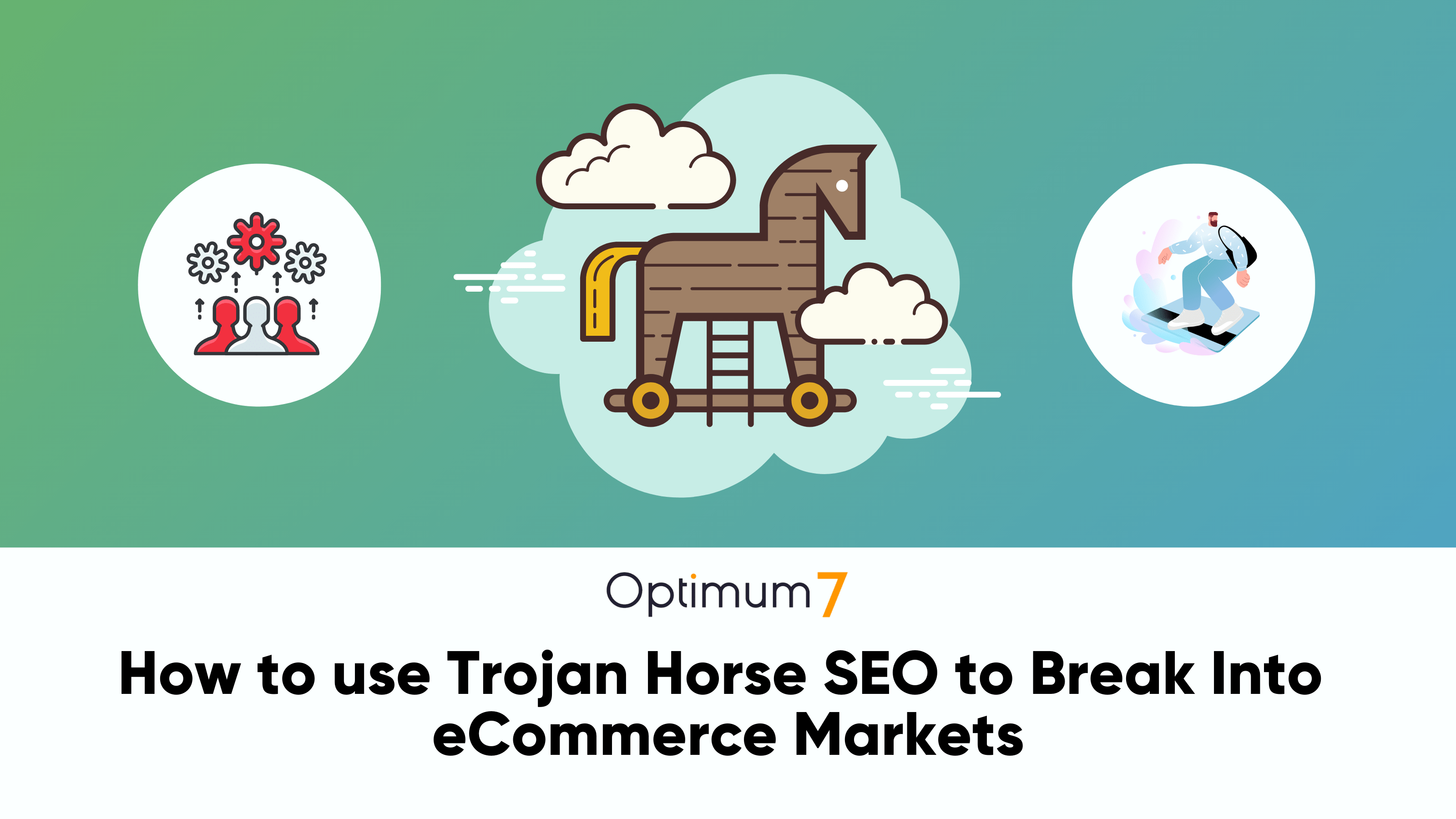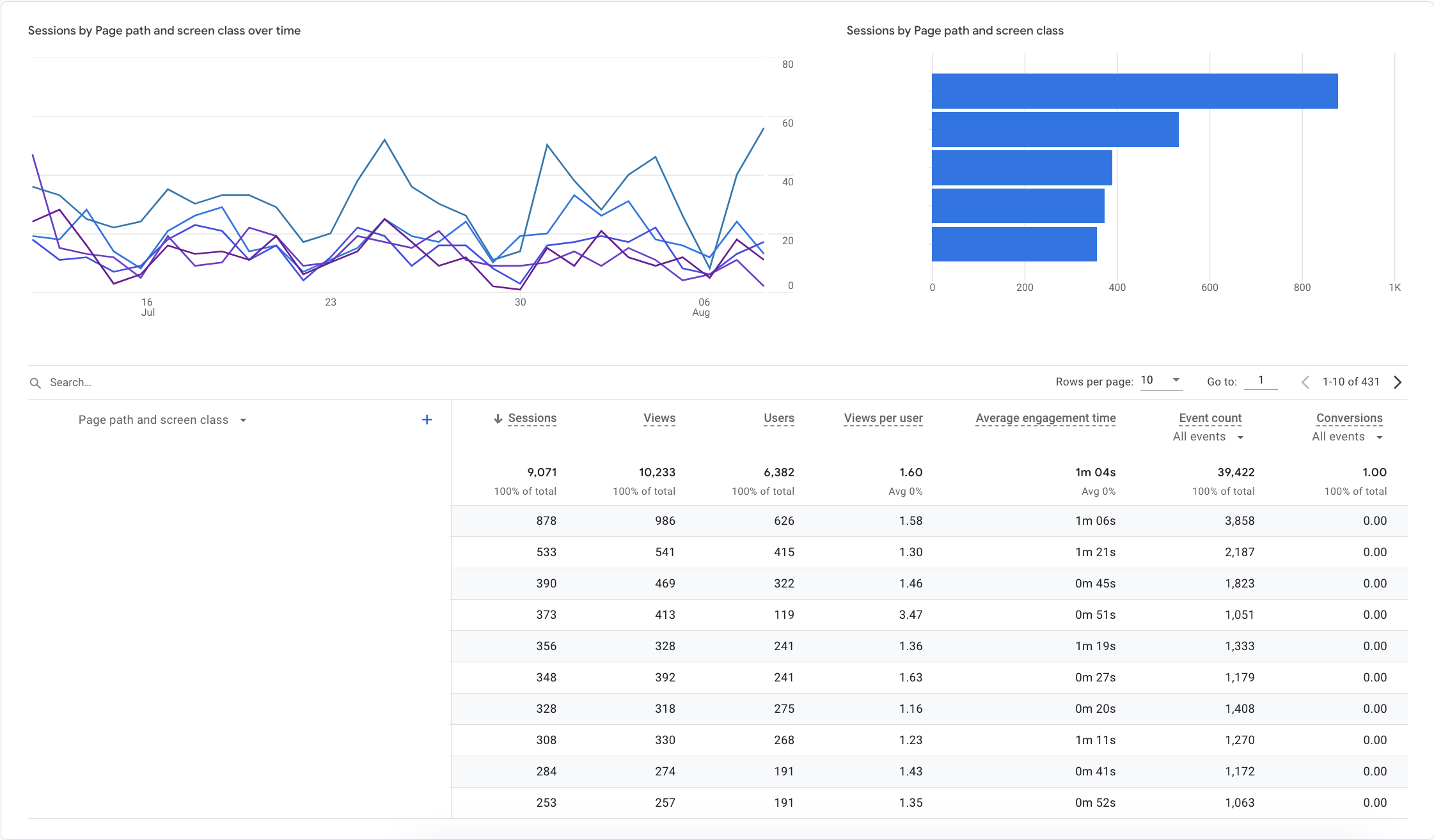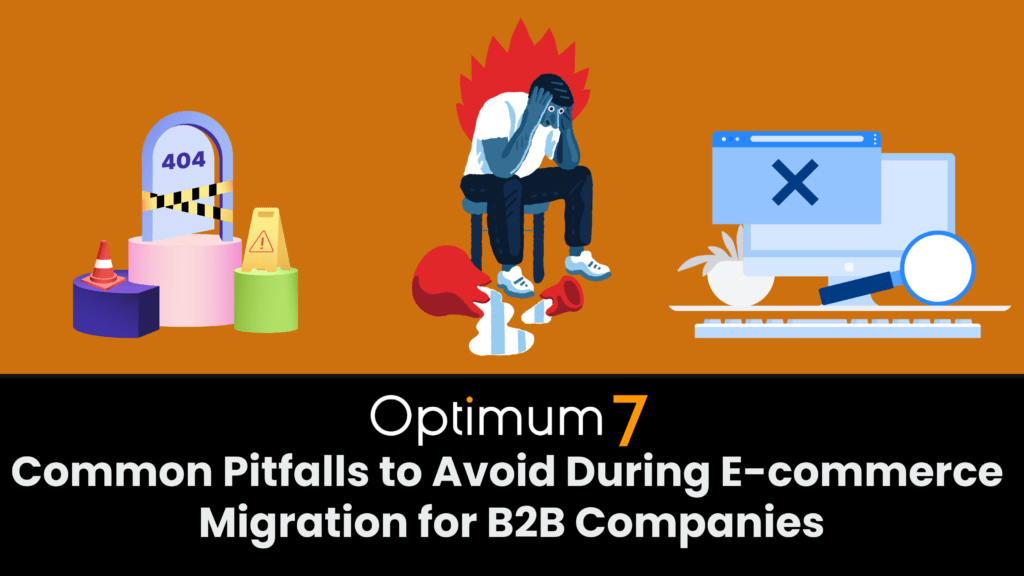Standing out in e-commerce requires more than a strong product—it demands strategic innovation in how you attract and retain customers. One of the most potent, yet underutilized, strategies is Trojan Horse SEO. This approach involves embedding powerful SEO tactics within high-quality, relevant content that appears purely informational or beneficial on the surface. By doing so, businesses can stealthily penetrate saturated markets, boosting their visibility where traditional advertising might falter.
This method not only increases organic search rankings but also positions the brand as a trustworthy source of information, thereby enhancing user engagement and loyalty to the online store. As e-commerce continues to evolve, the ability to adapt and implement such innovative strategies becomes crucial in capturing and expanding market share. Trojan Horse SEO represents a strategic melding of content marketing and SEO sophistication to achieve these goals, offering a significant competitive edge in a crowded marketplace.
Understanding Trojan Horse SEO
Definition and Origin of the “Trojan Horse” Concept The term “Trojan Horse” hails from the ancient Greek story where Greek soldiers used a deceptive wooden horse to infiltrate and conquer the city of Troy. It symbolizes a strategy of sneaking something valuable into a protected area under a guise. In the digital marketing realm, this metaphor translates to the strategic embedding of SEO within valuable content, allowing businesses to penetrate market defenses unnoticed.
Adaptation of the Concept to SEO and E-commerce In e-commerce, Trojan Horse SEO adapts this concept to digital marketing strategies. The essence lies in crafting content that serves dual purposes: providing genuine value to the reader while simultaneously serving as a vehicle for strategic SEO practices. This content is designed to rank highly on search engines for competitive keywords, drawing in traffic under the guise of utility and relevance, which in turn boosts the visibility and credibility of an e-commerce site.
Core Principles of Trojan Horse SEO
- Disguise: The SEO elements are seamlessly integrated within valuable content, making their presence unnoticed but effective. The content must first and foremost be useful to the audience, ensuring that the SEO tactics do not compromise the integrity or quality of the information provided.
- Deception: This principle is not about deceiving users but rather search engines, in a way that adheres to SEO best practices. The goal is to craft content that search engines interpret as highly relevant and authoritative, thus deserving of a high ranking.
- Strategic Placement: Every piece of content should be strategically developed and placed to target specific keywords and market segments. This involves detailed research into audience behavior, competitors, and search trends to identify opportunities where such SEO can be most effective.
By understanding and implementing these core principles, e-commerce businesses can use Trojan Horse SEO to subtly yet powerfully capture market interest and secure a competitive edge.
Planning Your Trojan Horse SEO Campaign
Market Research
Successful Trojan Horse SEO begins with meticulous market research. This step for the marketing team is crucial for identifying both opportunities and gaps within the market that can be leveraged.
- Identifying Gaps in the Market: Analyze the current market to pinpoint areas that are underserved or where customer complaints are prevalent. These gaps offer fertile ground for SEO campaigns that introduce your solutions as superior alternatives.
- Understanding Consumer Needs and Search Behaviors: Utilize tools like Google Analytics, SEMrush, or Ahrefs to gather data on what potential customers are searching for, how they are searching, and the kind of content they prefer. This insight helps tailor your SEO efforts to match the actual demands and search habits of your target audience.
Content Strategy
With a solid understanding of the market and consumer needs, the next step is to develop a content strategy that aligns with those valuable insights while incorporating effective SEO tactics.
- Developing High-Quality, Engaging Content: The content should be meticulously crafted to address the interests and needs of your target audience while embedding SEO strategically. It should provide value such that it engages users and encourages them to share it, thus naturally boosting its reach and effectiveness.
- Types of Content That Work Best for Trojan SEO: Certain types of content tend to perform better for Trojan Horse SEO because they are inherently rich in information and conducive to including keywords naturally.
- Guides: Detailed guides on specific topics can attract readers at various stages of the customer journey, from awareness to decision-making.
- Infographics: These combine important data and trends in an easily digestible format, often shared across social media and other platforms, which enhances link building.
- Detailed Product Reviews: By providing comprehensive reviews, you not only offer valuable content that helps consumers make informed decisions but also increase dwell time and engagement, which are positive signals to search engines.
Crafting a Trojan Horse SEO campaign requires a blend of strategic insight, keyword research, creative content development, and meticulous execution. By aligning content strategy with market research, e-commerce businesses can create powerful SEO campaigns that attract, engage, and convert, ultimately securing a stronger foothold in competitive markets.
Building the Trojan Horse Website
The effectiveness of a Trojan Horse SEO strategy is largely contingent upon the design and functionality of the underlying website. It must not only attract visitors but also convert them into customers, which requires a combination of user-friendly design, technical SEO and analytics tools, and seamless e-commerce integration.
Website Design
- Creating a User-Friendly, Visually Appealing Site: The website should have an intuitive layout that makes navigation simple for users. The design should also be aesthetically pleasing, using colors, fonts, and images that align with the brand and appeal to the target audience. Every design element should enhance the user’s experience, not detract from it.
- Ensuring the Website is Optimized for Mobile and Fast Loading: With the majority of web traffic now coming from mobile devices, a mobile-first design is essential. The site must also load quickly to reduce bounce rates and improve user satisfaction. Tools like Google’s PageSpeed Insights can be used to test and optimize site speed.
SEO Optimization
- On-Page SEO Tactics Specific to E-commerce: This includes optimizing product descriptions, meta tags, and images with relevant keywords without sacrificing readability and engagement. Strategic use of headers (H1, H2, etc.) and the inclusion of internal links to related products or content can help boost SEO performance.
- Technical SEO Considerations to Enhance Site Credibility and Search Engine Ranking: Technical SEO elements such as structured data markup for products, an XML sitemap for easy crawling, and secure connections (HTTPS) are crucial. These elements help search engines understand and trust the site, improving rankings and visibility.
Integration with E-commerce
- Seamless Integration of E-commerce Elements: The e-commerce components of the site, such as product listings and checkout processes, should be seamlessly integrated into the overall design. This integration should ensure that the user’s journey from product discovery to purchase is intuitive and frictionless.
- Using Analytics to Track User Behavior and Optimize the User Journey: Implementing tools like Google Analytics or Adobe Analytics allows for the monitoring of how users interact with the site. This data is invaluable for understanding which parts of the site perform well and which need improvement. Tracking conversions, bounce rates, and user paths can inform adjustments to both content and design to better meet consumer needs.
Building a website that effectively employs Trojan Horse SEO requires careful planning and execution across design, SEO, and e-commerce integration. Each element must work in harmony to create engagement that not only attracts users but also provides a compelling and smooth path to purchase.
Launching and Promoting Your Website
Once your website is strategically aligned with Trojan Horse SEO principles and ready for the public, the next crucial step is the launch and promotion. This stage is all about maximizing visibility and driving organic traffic back to the new site.
Launch Strategy
- Timing Your Launch to Coincide with Industry Events or Shopping Seasons: Launching your website during key moments when potential customers are most active can significantly increase its initial impact. For example, aligning the launch with major industry expos, holiday seasons, or shopping events like Black Friday can provide natural traffic boosts and higher visibility.
- Initial Promotion Through Social Media, Email Marketing, and Partnerships: Utilize social media platforms to create buzz around the launch. Tailor your message to each platform to engage different segments of your audience effectively. An email campaign targeting existing customers or interested leads can also drive initial traffic. Additionally, forming partnerships with other brands or influencers within the industry can help reach a broader audience.
Link Building
- Strategies for Gaining Backlinks from Reputable Sites: Backlinks are essential for SEO and can significantly enhance your site’s credibility and ranking. Develop a strategy to earn backlinks by creating valuable, shareable content, engaging with community platforms, and reaching out to industry leaders for potential feature opportunities.
- Guest Blogging and Content Syndication to Boost Site Authority: Writing guest posts for well-established blogs in your industry can lead to valuable backlinks and increased exposure. Similarly, syndicating your content on platforms like Medium or industry-specific forums can extend your reach and authority, helping to attract traffic back to your site.
The launch and promotion of product pages on your website should be as meticulously planned as its development. By strategically timing your launch, engaging with your audience through various channels, and building a robust link profile, you can ensure that your site gains the traction it needs to succeed in a competitive market.
Monitoring and Adjusting
Once your Trojan Horse SEO website is live and being promoted with the right keywords, the next critical phase is monitoring its performance and making the necessary adjustments. This continuous improvement cycle is vital to maintaining and enhancing the effectiveness of your SEO strategy and overall website performance.
Performance Metrics
- Key Performance Indicators (KPIs) to Monitor: To evaluate the success of your website, certain metrics are essential:
- Traffic: Total visits, unique visitors, and the sources of this traffic (organic, direct, referral, social, etc.) provide insights into how well your SEO and marketing efforts are driving users to the site.
- Conversion Rates: How many of your visitors are converting into customers or taking desired actions? Monitoring conversion rates helps assess the effectiveness of your website in achieving its business goals.
- SERP Positions: Tracking the search engine results page (SERP) positions for targeted keywords allows you to measure the success of your SEO efforts and identify areas for improvement.
Adjustments and Optimization
- Using A/B Testing to Refine Content and Website Features: A/B testing involves creating two versions of a web page (A and B) to see which one performs better on specific metrics like clicks, form completions, or purchases. This method allows you to make data-driven decisions about changes to content, layout, images, calls to action, and more.
- Updating Content and Keywords Based on Performance Data and Market Changes: SEO and content marketing are not set-and-forget strategies. Regularly review the performance data to identify which pieces of content are performing well and which are not. Update underperforming content and refresh keywords according to new SEO trends, algorithm updates, or shifts in consumer behavior. Staying current with market trends and being responsive to feedback can significantly impact your site’s relevance and effectiveness.
By actively monitoring these KPIs and continuously optimizing your website based on real users and data points, you can ensure that your Trojan Horse SEO strategy remains effective and that your website continues to meet its performance targets. Adjusting your tactics in response to analytical insights and market changes will help maintain and improve your competitive edge in the evolving e-commerce landscape.
Ethical Considerations and Best Practices
While Trojan Horse SEO strategies offer effective ways to penetrate competitive markets, they must be handled with ethical considerations at the forefront to avoid deceptive practices that could damage trust and credibility.
Discussing the Ethical Implications of Using Deceptive Strategies
The term “Trojan Horse,” by its historical and mythical nature, suggests deception—a tactic that could imply unethical implications in business. In the context of SEO and marketing:
- Avoid Misleading Content: While the strategy involves embedding SEO within useful content, the information provided must remain accurate, helpful, and truthful. The intent should not be to merely trick users into visiting your website but to offer genuine value that justifies their visit and encourages them to engage further.
- Transparency with Intentions: Ensure that any promotional or sponsored content is clearly labeled as such. Users should never feel duped about the nature of the content they are consuming.
Guidelines for Maintaining Transparency and Trust with Consumers
Maintaining a transparent relationship with consumers is essential not only for ethical reasons but also for long-term business success. Here are some guidelines to uphold transparency, customer data, and trust:
- Clear Communication: Be clear and upfront about the use of personal data, particularly how it is collected, used, and stored. Ensure that privacy policies are easy to access and understand.
- Authentic Engagement: Engage with customers authentically. Respond to their inquiries, feedback, and complaints promptly and transparently. Showing that you value their input and are willing to make changes based on their needs can significantly enhance trust.
- Responsible Content Marketing: When producing content, ensure it serves the dual purpose of meeting users’ needs and advancing your business goals without compromise. This approach builds confidence in your brand and fosters a loyal customer base.
- Regular Reviews and Audits: Conduct regular reviews of your content and SEO practices to ensure they comply with ethical standards and industry guidelines. This not only enhances trust but also aligns with best practices for SEO and content marketing.
By adhering to these ethical considerations and best practices, businesses can utilize Trojan Horse SEO strategies effectively while maintaining a strong, trust-based relationship with their audience. This ethical approach not only averts potential reputational risks but also builds a foundation for sustainable growth and customer loyalty.
Partner With Optimum7
Trojan Horse SEO presents a dynamic and potent strategy for e-commerce businesses striving to carve out a niche in the highly competitive digital marketplace. By integrating robust SEO tactics within valuable, engaging content, businesses can effectively attract more traffic, enhance their search engine rankings, generate buzz, and ultimately, increase conversions. This approach not only boosts visibility but also establishes the brand as a credible authority in its industry, which is crucial for long-term success.
The potential benefits of deploying a Trojan Horse SEO strategy are significant, offering businesses a way to subtly yet effectively penetrate market segments that might otherwise seem inaccessible. When executed with precision, this strategy can lead to a sustainable competitive advantage, driving organic growth, and building a loyal customer base.
In conclusion, Trojan Horse SEO offers a pathway to enhanced market penetration and brand development for e-commerce entities. When implemented responsibly, it can propel a business to new heights of success without sacrificing ethical standards or consumer trust. As the digital landscape of e-commerce business continues to evolve, embracing such innovative yet conscientious marketing tactics will be key to thriving in an increasingly crowded and complex market environment.







